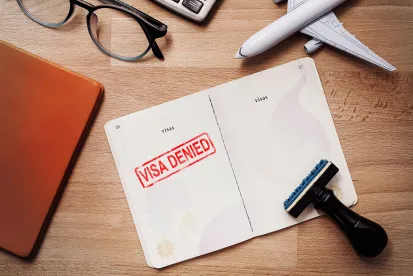The Trump Administration has signaled it will issue further immigration restrictions in response to the novel coronavirus epidemic – this time, to restrict foreign workers entering the United States.
The rumored executive order is expected to impose a temporary ban on the entry of nonimmigrant workers seeking to enter the United States with H-1B, H-2B, L-1, and J-1 visa classifications. H-1B and L-1 visas cover skilled workers and intra-company transfers. H-2B visas cover temporary seasonal workers, and J-1 visas cover work and study exchange programs (e.g., visiting physicians, au pairs, and camp counselors).
The ban is expected to last anywhere from 90 to 180 days (though the administration has signaled a strong preference for 120 days), and would include nonimmigrant workers who were selected in this year’s H-1B visa lotteries to start working in the U.S. this October. The order likely would include exemptions for nonimmigrant workers performing Coronavirus-related medical research, healthcare professionals, and food supply workers, as well as exemptions for employers who are unable to recruit American workers to fill certain positions. The order likely also will include a broad national interest catch-all exception, as well as a mechanism for companies to seek an exemption for a “specified reason” (though there is no clarity as to what might qualify as a “specified reason”).
In addition to issuing an executive order, the White House has asked the Department of Labor (“DOL”) and the Department of Homeland Security (“DHS”) to pursue additional regulatory initiatives restricting the issuance of nonimmigrant visas. Unlike an executive order, any regulatory initiatives would be subject to the usual notice and comment rule-making process, which takes between 30 to 60 days. After the comment period, any new rules would be implemented no earlier than 30 days after publication in the Federal Register. Accordingly, these initiatives could come into effect before the end of 2020.
The regulatory initiatives under consideration would impose significant and costly barriers to employing skilled foreign workers. One initiative would require both the employer and the customer to file a Labor Condition Application (“LCA”) on behalf of an H-1B worker assigned to work onsite at the customer’s location. This initiative alone could have a substantial chilling effect on customers’ willingness to engage these workers. Another initiative would eliminate the exception that allows science, technology, engineering, and mathematics students an additional 24 months of Optional Practical Training (“OPT”) work authorization, during or after their U.S. education. Yet another would limit OPT eligibility only to those international students in the top percentile of their classes. Other initiatives under consideration would increase H-1B visa fees by $20,000, increase mandatory minimum wages for foreign workers at every level of the federally-mandated wage scale, and narrow the definitions of “specialty occupation,” “employer,” “employee,” and “employer-employee relationship.” Finally, some of these initiatives would revoke existing programs, including work authorization for spouses of visa beneficiaries under the H-4 visa program, and work authorization for asylees, refugees, and temporary protected status holders.
Each of these initiatives is expected to be contested by American businesses and organizations that rely on nonimmigrant workers, including many in the technology, medical, manufacturing, and hospitality sectors. Enactment also will likely be contingent upon President Trump being elected to a second term. Nonetheless, given the wide-ranging scope of the initiatives and the imminence of the executive order, companies employing nonimmigrant workers should consider contingency planning to mitigate the effects of the proposed changes.




 />i
/>i

